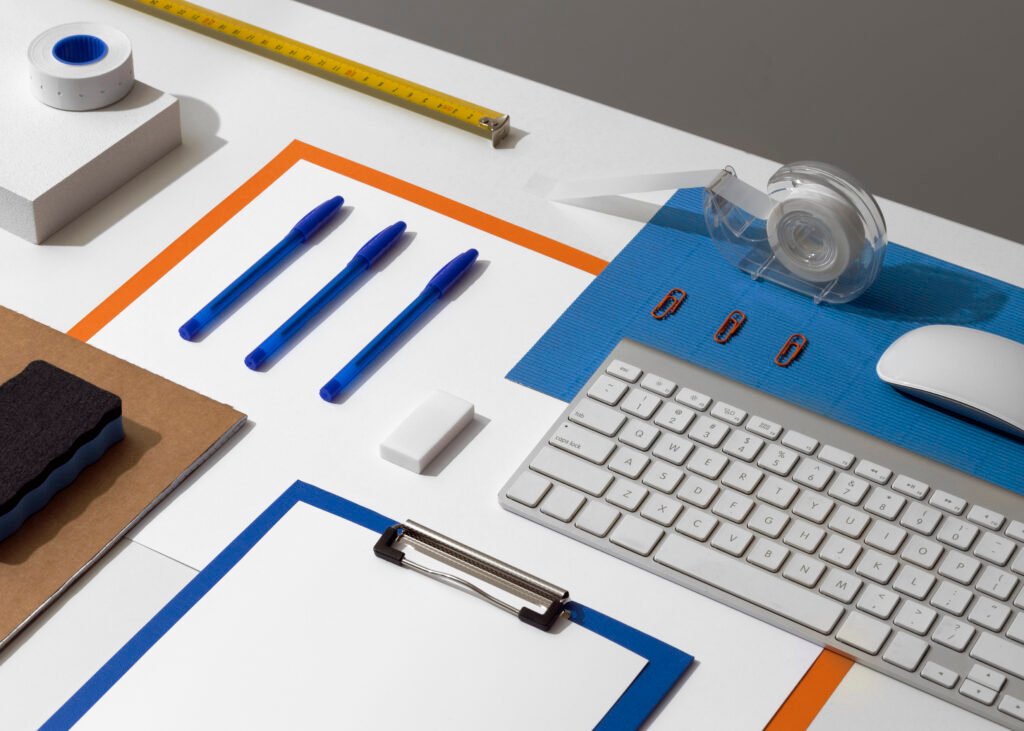A strong personal brand is not an accident — it’s engineered. A thoughtful Personal Branding Toolkit gives you the visual identity, content tools, and systems you need to appear professional, consistent, and memorable across platforms. Below you’ll find a practical, step-by-step guide to the 11 core items every professional should own, how to use them, budget-friendly alternatives, and technical setup advice so your brand looks and sounds great everywhere.

Table of Contents
Why build a Personal Branding Toolkit?
Your toolkit removes friction. Instead of scrambling for a logo, fumbling with lighting for a headshot, or producing mish-mash social posts, you follow a repeatable, high-quality process. The result: faster trust, more conversions, and a professional presence that scales.
A good Personal Branding Toolkit helps with:
- Consistency across profiles (LinkedIn, portfolio, website)
- Faster content creation (templates + systems)
- Higher perceived authority (professional visuals & audio)
- Better networking outcomes (polished impressions
How to use this article
Read the 11 items first. Each item contains:
- What it is and why it matters for your personal brand
- How to set it up (step-by-step)
- Technical specs and recommended settings
- Budget and pro options
- Templates or sample use cases
If you add affiliate links later, the product sections are already scoped so the article won’t feel incomplete without them.
1 — Logo templates & simple brand mark
What & why:
A logo template is a pre-designed set of logo variations (stacked, horizontal, icon-only) you can customize. A simple brand mark is crucial because it appears on business cards, social headers, and favicons — a tiny bit of design that broadcasts professionalism.
How to set it up:
- Choose 2–3 founder-approved logo templates (vector SVG format).
- Pick primary and secondary logo versions: full logo (with name + mark), icon-only.
- Export in web sizes (SVG for the web, 512×512 PNG for avatars, 2000px PNG for print).
Technical specs:
- Vector source: SVG or .ai for scalability.
- Web: 32×32 favicon, 400×400 social avatar, 1500–2500px header hero (compressed JPG/WEBP).
- Print: 300 DPI PNG or PDF, with CMYK color files.
Budget vs. Pro:
- Budget: Use logo template packs (Canva/Envato) + export SVG.
- Pro: Commission a designer for a unique mark + deliverables package.
Quick tip: Always include a monochrome version for watermark or low-color contexts.
2 — Brand kit book (color palette, typography, voice)
What & why:
A one-page brand kit or mini-book defines your colors, fonts, voice, and logo usage rules. This is the backbone of your Personal Branding Toolkit — it keeps everything consistent.
How to create it:
- Primary color (hex) + 2 secondary colors + 2 neutral colors.
- Primary font (web-safe fallback) + headline font.
- Tone & voice examples (3 example sentences: formal, neutral, friendly).
- Logo spacing rules and incorrect usages.
Technical notes:
- Provide color values: HEX, RGB, and CMYK.
- Fonts: Include Google Fonts equivalents and font weights to use (e.g., Inter: 400/600/800).
- Export: PDF + editable source (Figma/Canva).
Template use-case: Use the brand kit when making social templates, business cards, and website theme tweaks
3 — Professional headshot kit (backdrop + lighting)
What & why:
A great headshot increases trust and profile clicks. Your toolkit should include a reliable lighting and backdrop setup so you can produce high-quality headshots and short intro videos on demand.
Components:
- Softbox or ring light (18–24″ ring light or 2 x softboxes)
- Neutral backdrop (gray / white / brand-colored fabric) or collapsible backdrop kit
- Phone tripod or DSLR tripod + remote shutter
Step-by-step headshot setup:
- Place the backdrop ~1.5–2m from the subject to avoid shadows.
- Use soft frontal lighting at eye level (ring light) and a fill light at 45°.
- Set camera: aperture f/2.8–f/5.6 (depending on lens), ISO 100–400, shutter 1/125s or higher. For phone, enable HDR and lock exposure on the face.
- Frame: crop from mid-chest up, leave headroom, center the eyes ~1/3 from top.
Budget vs. Pro:
- Budget: Desktop ring light + phone tripod + neutral wall.
- Pro: Photographer session with DSLR + softbox + retouching.
Editing tips: Use non-destructive edits: slight exposure, clarity, and skin smoothing. Use Lightroom presets to match your brand kit colors.
4 — Website theme & portfolio templates
What & why:
Your website is the permanent home for your brand. A well-chosen theme (WordPress, Webflow, or a static site) from your Personal Branding Toolkit makes launching faster and keeps content consistent.
How to choose:
- Goal-based: portfolio (visual work) vs. thought-leadership blog vs. services/consulting page.
- Speed & SEO: lightweight theme, schema support, mobile-first.
- Customization: easy typography and color overrides matching your brand kit.
Technical checklist:
- Fast load: <3s on mobile, use lazy loading for images.
- SEO foundations: title tags, meta descriptions, OpenGraph tags, structured data for person/organization.
- Accessibility: alt text on images, semantic headings (H1→H2), contrast >= 4.5:1.
Suggested pages: Home, About, Portfolio/Services, Case Studies, Contact, Blog. Include downloadable resume PDF and a clear CTA.
Budget vs. Pro:
- Budget: Premium WordPress theme (Astra/GeneratePress) + page builder templates.
- Pro: Custom Webflow site or custom WordPress theme with unique interactions
5 — Microphone & audio setup for calls & recordings
What & why:
Crisp audio equals perceived professionalism. Whether you record podcasts, make pitch videos, or do client calls, a decent microphone is essential to your Personal Branding Toolkit.
Hardware basics:
- USB condenser mic (e.g., cardioid pattern) for convenience.
- XLR dynamic mic + audio interface for pro setups.
- Pop filter, boom arm, and mic isolation shield.
Setup & settings:
- Mic position: 15–20cm from your mouth, slightly off-axis to reduce plosives.
- Recording sample rate: 44.1–48 kHz, 24-bit for voice.
- Use gain so input peaks at -6dB to -3dB, avoid clipping.
Software tips:
- Use noise reduction tools (Krisp, RTX Voice) for live calls.
- For recordings, record raw → apply gentle EQ (cut 100–150Hz rumble, slight presence boost 3–5kHz) → mild compression.
Budget vs. Pro:
- Budget: USB mic (plug-and-play) + pop filter.
- Pro: XLR mic + Focusrite Scarlett interface + acoustic treatment.
6 — Business cards & digital contact cards
What & why:
Physical business cards still matter for in-person networking. Digital contact cards (vCards / NFC cards) bridge the physical-digital gap — essential items in your Personal Branding Toolkit.
Design notes:
- Align with brand kit colors and typography.
- Include only necessary information: name, title, one-liner, email, website, 1 social handle.
- Use QR linking to a contact landing page with downloadable vCard and portfolio.
Print specs:
- Size: 85 × 55 mm (standard), 300 DPI, bleed 3mm.
- Use 350–450 gsm cardstock; consider matte finish or a subtle spot UV for logo.
Digital business tools: Add an NFC card or a short URL to a mobile-first contact page
7 — Content templates (social, email, pitch)
What & why:
Templates speed up consistent messaging. Your Personal Branding Toolkit should include templates for social posts, outreach emails, case study formats, and pitch decks.
Essential templates:
- LinkedIn post template (hook → problem → proof → CTA)
- Email outreach sequence (intro → value → ask → follow-up)
- Case study template (challenge → approach → results → visuals)
- 1-page pitch / one-pager PDF
How to use: Keep templates in Google Docs or Notion and clone for each campaign. Use the brand kit fonts/colors in exported PDFs.
8 — Video / webcam setup (camera, tripod, lighting)
What & why:
Short videos introduce personality and create trust. A basic webcam/video kit is part of your Personal Branding Toolkit for polished video calls, reels, and testimonials.
Camera options:
- Good webcam (1080p/60fps) or mirrorless/DSLR for higher production.
- Lens choice for DSLR: 35–50mm prime with f/1.8–f/2.8 for nice bokeh.
Framing & composition:
- Rule of thirds: place eyes ~1/3 from top.
- Background: tidy, brand-aware (bookshelf, plant, subtle logo).
- Lighting: key light (soft), fill light or reflector, and optional hair/backlight.
Recording settings:
- 1080p at 30 or 60 fps; for cinematic feel, 24fps OK.
- Bitrate: aim for ≥10 Mbps for 1080p.
Editing: Use simple editors (CapCut for short, DaVinci Resolve for longer edits).
9 — Digital asset manager & backups
What & why:
Your Personal Branding Toolkit should include organized storage and backup (brand assets, high-res photos, templates). Chaos here leads to wasted time.
Structure suggestion:
- Root: /PersonalBranding
- /Logos (SVG, PNG, PDF)
- /Photos (headshots, background)
- /Templates (PowerPoint, Docs, Social)
- /Audio (raw, masters)
- /Web (exports)
Backup plan: Cloud + local: Google Drive or Dropbox for cloud + external SSD (encrypted) for local. Use version control for important documents or Figma for design files with history.
10 — Analytics & monitoring stack
What & why:
Measure what works. Analytics help you know which pages, posts, or content formats drive engagements and leads.
Metrics to track:
- Website: sessions, referral source, conversion (contact form submits).
- Social: profile views, engagement rate, shares, messages from recruiters/clients.
- Content: downloads, video watch time, click-through to portfolio.
Tools: Google Analytics / GA4, LinkedIn analytics, simple CRM or Airtable for leads, and Hotjar for session feedback.
How to implement: Tag links with UTM parameters, create a weekly dashboard with top 5 KPIs, and set alerts for spikes (new mentions, backlinks).
11 — Guided workbook / planner for brand strategy
What & why:
A workbook helps you clarify positioning, target audience, brand promise, talk tracks, and a 90-day content calendar. This strategic document ensures your Personal Branding Toolkit isn’t just gear—it’s a plan.
Core modules of the workbook:
- Brand statement and one-liner
- Audience personas (3)
- Messaging matrix (problem → promise → proof → CTA)
- 90-day content calendar templates
- Outreach sequences and scripts
How to use: Weekly review, monthly metrics check, quarterly brand refresh.
Combined launch checklist — get your Personal Branding Toolkit live (copyable)
- Finalize logo variations + export web/print files.
- Complete brand kit (PDF + editable).
- Shoot headshot and export hero images.
- Launch website with home/about/portfolio pages.
- Set up email + contact form with autoresponder.
- Add analytics tracking (GA4 + LinkedIn) and UTM guidelines.
- Record intro video (60–90s) for homepage.
- Create 5 social templates in brand colors.
- Print business cards and order NFC/digital contact cards.
- Backup the whole /PersonalBranding folder and automate weekly sync.
Budget tiers & quick shopping guide
- Starter kit (~$50–$300): Canva Pro + logo templates, phone ring light & tripod, USB mic, free WordPress theme.
- Growth kit (~$300–$1,200): Premium theme, better ring light + backdrop kit, USB condenser mic, professional headshot session.
- Pro kit (~$1,200+): DSLR or mirrorless camera, XLR microphone + interface, custom WordPress/Webflow, designer logo & brand kit book.
Rank Math & SEO tips for your Personal Branding Toolkit pages
- Primary keyword: “Personal Branding Toolkit” — include in page title, meta description, H1, and first paragraph.
- Secondary keywords: “personal branding checklist”, “brand kit for professionals”, “personal brand assets”.
- Use schema: Add Person markup and Organization if you have a business.
- Optimize images: descriptive file names (john-doe-headshot.jpg), alt text, and next-gen WebP versions.
- Internal links: link your toolkit pages to portfolio, case studies, and contact page.
- Speed: compress assets and serve via CDN. Rank Math will score your page better with fast load and clear metadata.
FAQs — Personal Branding Toolkit
Q1: Do I need all 11 items right away?
A: No. Start with logo, headshot, website, and a simple content template. Add audio, video, and analytics as you scale.
Q2: Can I DIY professional headshots?
A: Yes — with a ring light, neutral backdrop, and good editing. For executive-level roles, consider a pro photographer.
Q3: How often should I refresh my brand kit?
A: Minor tweaks yearly; a full brand refresh every 3–5 years or when your positioning changes.
Q4: What’s the fastest way to get a personal website live?
A: Use a premium WordPress theme + a starter demo imported and customize with your brand kit. Expect a 1–3 day launch if you have assets ready.
Q5: How much content should I produce per week?
A: Quality over quantity. 1 thought-leadership long-form post per month + 2–3 short posts per week is a sustainable starting point.
Q6: How do I measure ROI of my Personal Branding Toolkit?
A: Track inbound leads, recruiter messages, and conversions (calls booked, client signups) attributed to your site/social using UTMs and CRM.
Q7: What file format should I keep for logo source files?
A: Keep SVG for web/vector, and PDF for print; maintain layered .ai or .fig for edits.
Final thoughts — build a toolkit that grows with you
A Personal Branding Toolkit is both an investment and an operating system. Start small, be consistent, and iterate. Use the checklist above to stage your build over 30/60/90 days: logo + headshot + website in month one; templates + audio/video in month two; analytics + advanced assets in month three.






